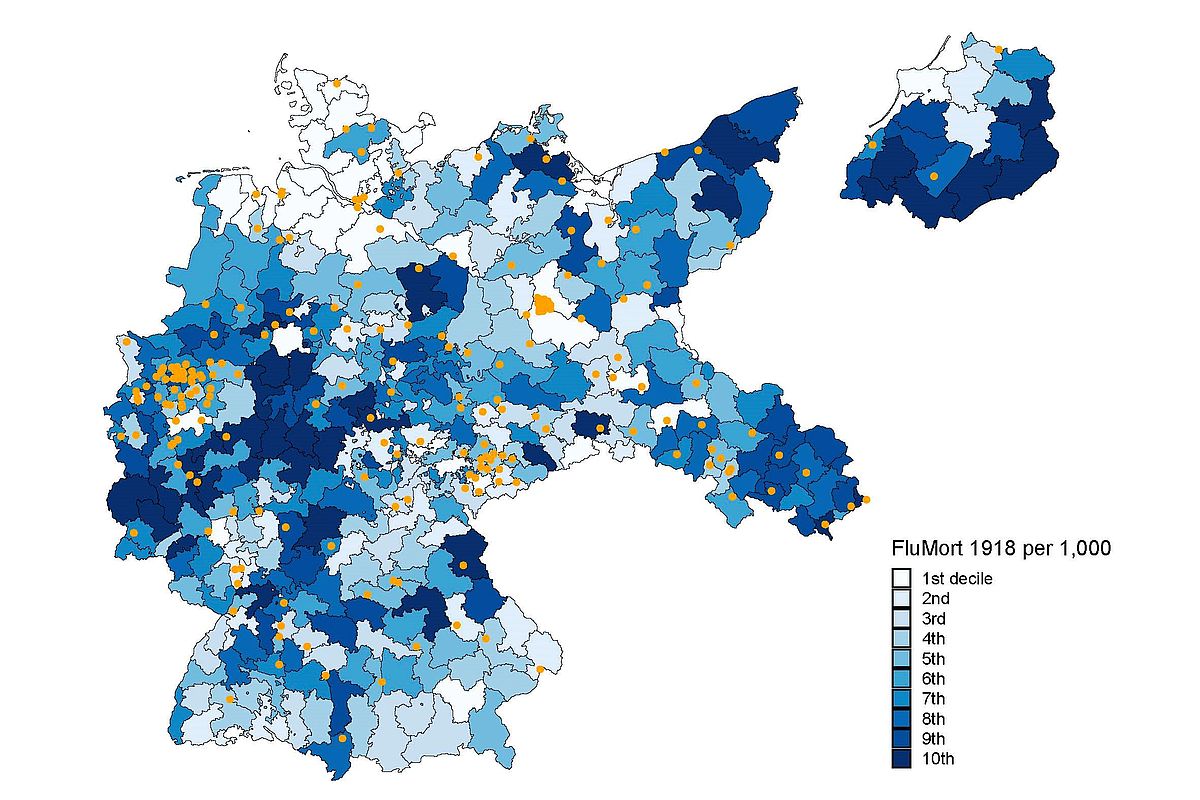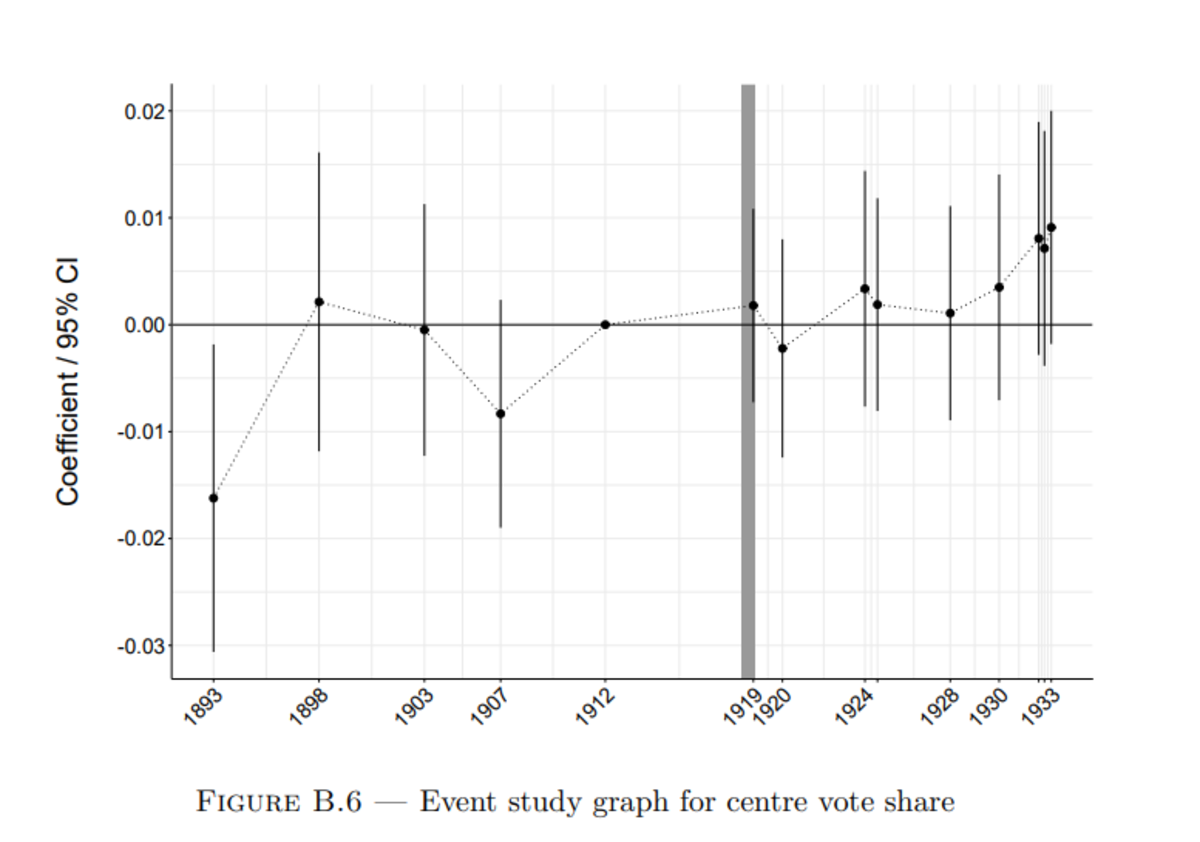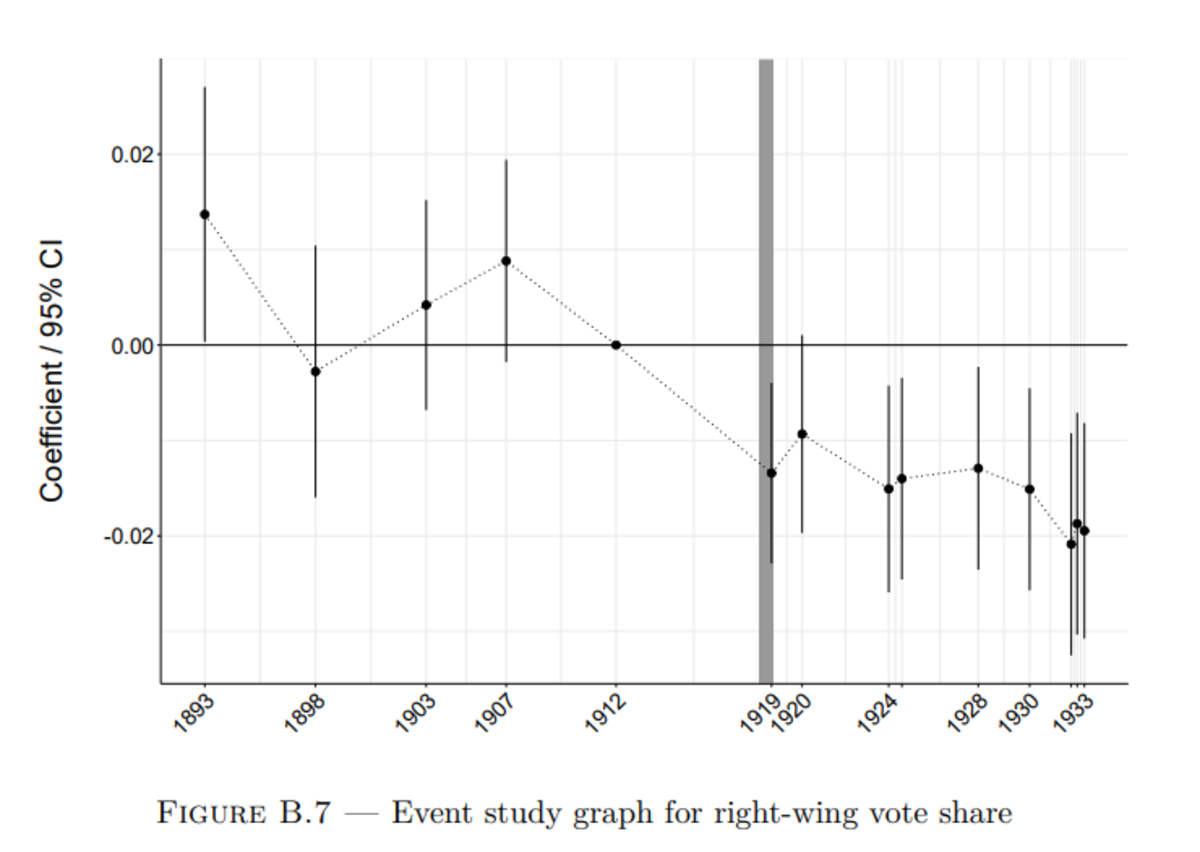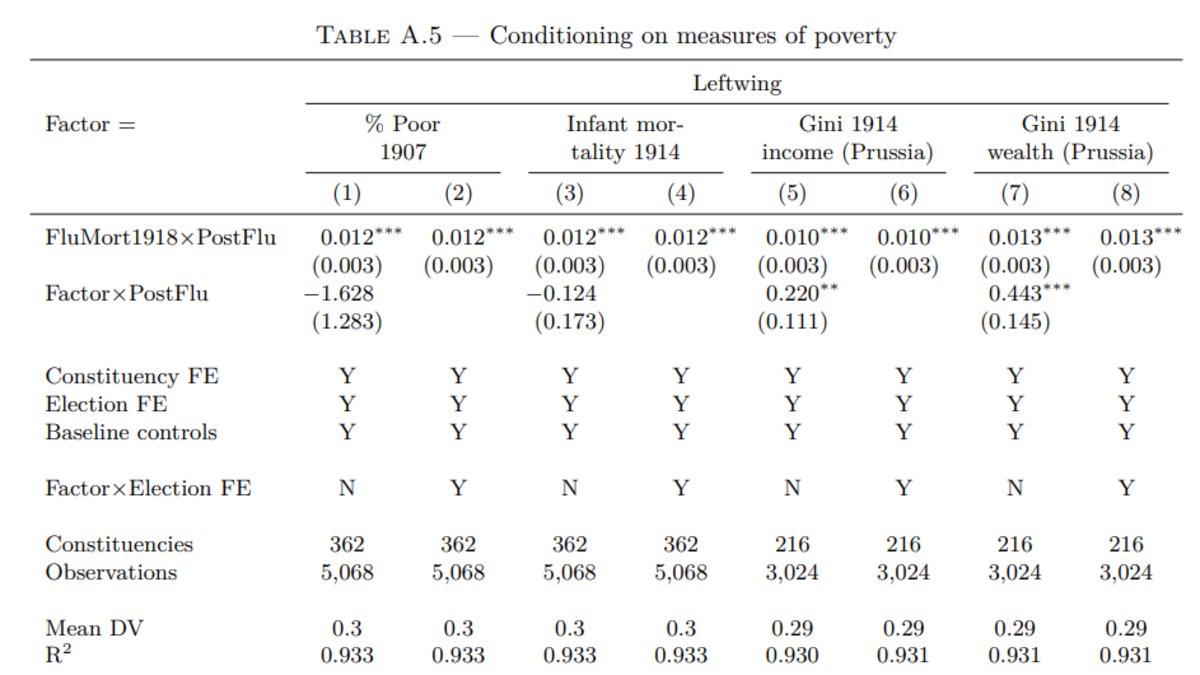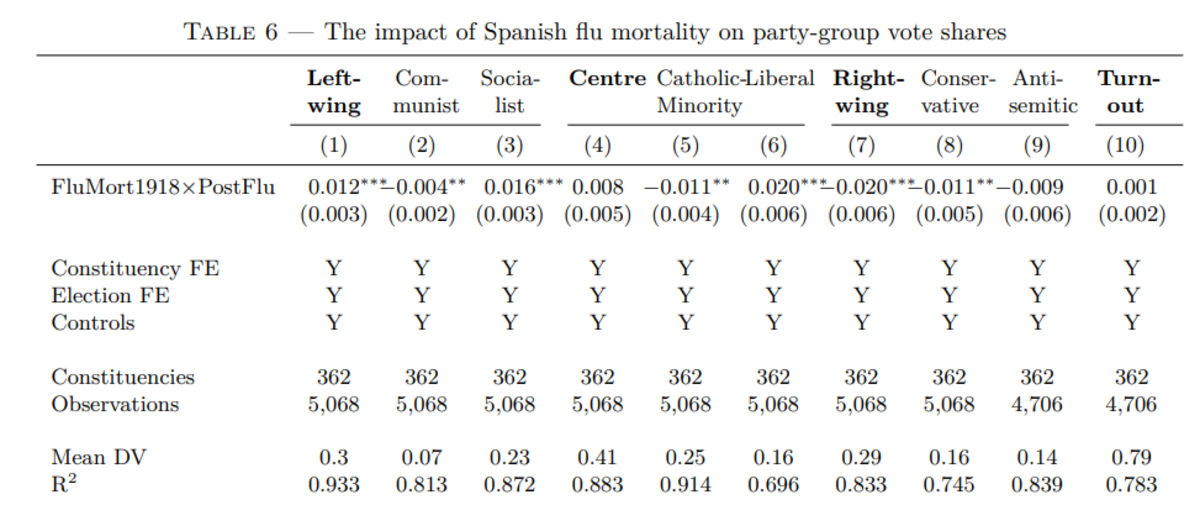The Pandemic that strengthened the moderates
How did the Spanish flu influence voting behaviour in the Weimar Republic? In our study, we use historical data to show that it was not the extreme parties that benefited, but the SPD in particular. By economists from Passau, Berlin, Cologne and Rome
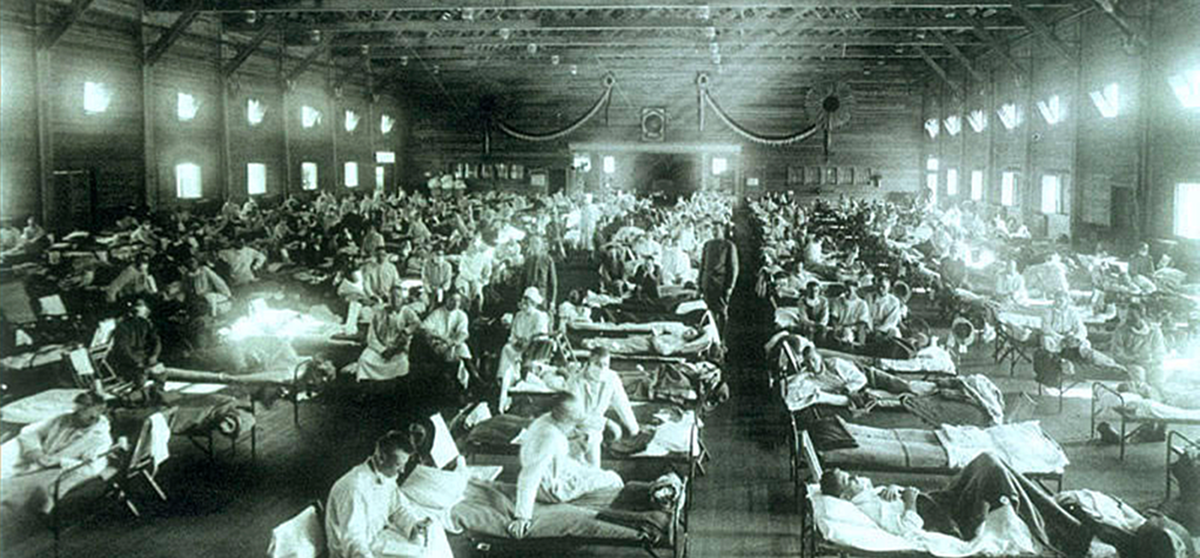
Emergency military hospital during the Spanish flu in Kansas, 1918 or 1919 via: National Museum of Health and Medicine, Armed Forces Institute of Pathology, Washington, D.C., United States - Pandemic Influenza: The Inside Story. Nicholls H, PLoS Biology Vol. 4/2/2006, e50; CC BY 2.5
Crises, war and then a pandemic. We are not talking about today, but about a time more than 100 years ago when an even worse disease swept the world - the Spanish flu. One might think that this was one of many factors that contributed to the rise of the Nazi Party. But this is not the case. Applying modern microeconometric techniques to historical data, we show that the opposite was true.
In our working paper "The Political Effects of the 1918 Influenza Pandemic in Weimar Germany," we analyse how the Spanish flu affected voting behaviour in the Weimar Republic. To do so, we use historical death data and combine it with data on election results from all German constituencies and more than 200 cities in the period from 1893 to 1933.
Our findings at a glance:
- In regions that were more fiercely affected by the Spanish flu, the left-leaning party bloc gained 8.1 percent compared to the elections before the outbreak of the pandemic.
- In the left-leaning camp, the Social Democratic Party (SPD) in particular benefited - and not just in the short term. The effect remained stable in the period under observation until 1933. The pandemic did not strengthen extreme parties.
- In a series of tests, we rule out that the effect of the Spanish flu is confounded by other possible causes such as poverty and inequality or war-related developments.
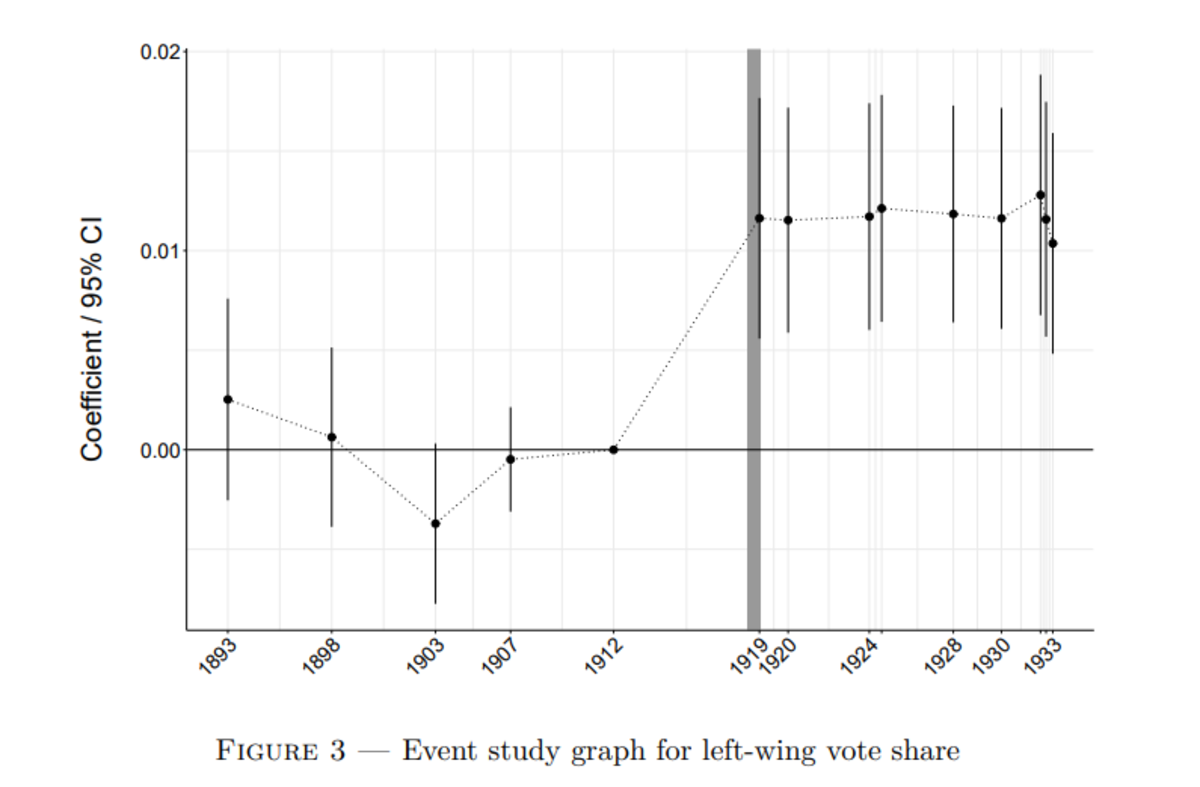
The graph shows voting for the left-leaning party bloc in constituencies that were particularly affected by the Spanish flu. Before the outbreak of the disease, these constituencies still followed the same trend in votes for the left camp as less affected constituencies (line 0). Only with the first election after the pandemic in 1919 a clear deviation from the common trend emerges, which remains relatively stable until 1933.
Situation in the German Reich
In 1918, World War I had not yet ended when a mysterious disease spread. It began with fever, cough, headache and pain in the limbs; often people died a few day later. Those affected suffocated, their skin turning dark blue from lack of oxygen. The U.S., where the disease first broke out, closed theaters and museums, and some U.S. cities responded with lockdowns.
The situation was different in the German Reich, where the second, deadly wave of the virus coincided with the Hundred Days Offensive, the final phase of the war on the Western Front. Politicians took no action out of concern for the morale of the population. Censorship prevailed, and the press did not report the outbreak at all at first; coverage was minimal in the second wave in October and November 1918. The war and the peace negotiations dominated the news.
Yet, the pandemic must nevertheless have been salient for the population. According to estimates, the Spanish flu killed more than 400,000 people in Germany in just a few months - comparable to deaths from the First World War in an entire year of war. The pandemic had an impact on everyday life, not only because of the many deaths, but also because many people were unable to work due to illness, causing delays in production processes.
Unusual shift to the left
In our study, we work with historical death data. Our co-author Christoph König, who has conducted a study on the political influence of World War I veterans, noticed that in regions that experienced a particularly strong shift to the left from 1919 onward, excess mortality was especially high in 1918, the year of the Spanish flu. We took this as a starting point to investigate whether there was indeed a causal relationship between the Spanish flu and the leftward shift.
How to identify excess mortality from Spanish flu without data on causes of death?
At the constituency level, we can rely on mortality data, but these do not include any information on causes of death. Therefore, we use econometric methods to try to predict excess mortality from the Spanish flu. In a first step, we use mortality data from 1904 to 1913 and calculate constituency-specific predictions for mortality in 1914 to 1918 on this basis. In all these years, we find higher mortality than would have been expected in the absence of war, with excess mortality in 1918 being even higher than in the other war years due to the Spanish flu. In a second step, we use excess mortality in the war years 1914 to 1917 to predict what excess mortality would have been in 1918 without the Spanish flu. The difference between the actual value in 1918 and our prediction could be the excess mortality caused by the Spanish flu, if our method works as desired. We then test whether our method works at the district level, because here we have data on causes of death. And indeed, it works. We see that our measure of excess mortality from Spanish flu increases by exactly one for each physician-identified influenza death. Our measure, on the other hand, does not respond to war deaths. As a result, we can identify Spanish flu deaths in constituencies, even though we don't actually have any data on them at this level.
Did the Spanish flu cause the shift to the left?
However, this does not prove that the Spanish flu is behind the swing to the left. To provide this evidence, we now compare the evolution of voting behaviour in particularly affected regions with those where there were fewer flu deaths in a dynamic difference-in-differences model over the period from 1893 to 1939. This model allows us to factor out constant regional differences as well as general time effects that applied to all regions.
Now, of course, from the last Reichstag election before the outbreak of the Spanish flu in the German Empire in 1912 to the first election thereafter in 1919 in the Weimar Republic, there were serious changes in the political system. These included the switch from majority to proportional representation, the lowering of the voting age, changes in the party landscape and the introduction of women's suffrage. To allow us to compare results nonetheless, we work with constituency boundaries from the Empire, group parties into three larger groups, the left-leaning bloc, the centrist bloc, and the right-leaning bloc, and control for constituency-specific changes in the electorate.
The results show that constituencies with higher and constituencies with lower influenza mortality follow a very similar trend in the complete pre-pandemic period, i.e., from 1893 to 1912, the last election before the Spanish flu. Only after the Spanish flu do we observe a significant increase in vote shares for the left-leaning bloc in constituencies with higher influenza deaths compared to constituencies with lower influenza deaths. If the number of influenza deaths increases by 2 per 1,000 population, which corresponds to an increase of about 30 percent of the average influenza mortality, the left-wing vote share increases by 8.1 percent compared to 1912. This effect remains stable until 1933. The right-leaning bloc, on the other hand, loses (see right graph).
Do other reasons come into question?
This is what the bulk of our paper is about: we check how robust, how valid our finding is by ruling out other reasons that could possibly also explain this shift to the left. Other reasons for the shift to the left could be, for example, increased poverty or inequality during the World War I years. We use data on wealth and income to calculate Gini coefficients, a statistical measure of inequality, and use data on the share of the poor. However, the inclusion of these control variables in our model does not change the effect of the Spanish flu. We also examine trends in infant mortality in affected areas, as this is often considered an important indicator of precarious living conditions, such as food shortages. However, it is not the case that infant mortality trends are different in constituencies with higher influenza mortality than in constituencies with lower influenza mortality before 1918. Data on city-level causes of death also show that our effects are indeed driven by mortality due to respiratory disease, the very death category in which influenza deaths are included. Moreover, we do not find even remotely similar effects for excess mortality from the war years before 1918, nor for excess mortality in 1918 that is not explained by the Spanish flu. Thus, we conclude that this shift to the left was really caused specifically by the Spanish flu.
Why this shift to the left?
Political science often explains voting behaviour by arguing that voters reward politicians for good policies or punish them for bad policies. But in our constellation, this is not true; our data show that the winners of the past election(s) in a constituency are neither systematically more nor systematically less likely to gain votes as a result of the Spanish flu. Another possibility would be a protest vote that strengthens extremist parties. But we do not see that either. There is no evidence of increased polarization in the affected areas. Rather, our analysis, in which we break down the left bloc, shows that with the SPD, the moderate left is winning. The Communist Party is actually losing.
The most plausible explanation for our results is provided by the "issue ownership" theory from political science. This states that parties that occupy an issue and credibly signal expertise in it register gains in votes as soon as this issue becomes more important to the population. The SPD succeeded in establishing and occupying health as a public issue - and not just with the outbreak of the Spanish flu. Unlike other parties, the SPD had already included the issue of health, with a focus on the working population, in its election programs before that. The party was also strongly involved in the self-governing bodies of the health insurance funds. The SPD had originally fiercely criticized the compulsory health insurance introduced by Bismarck in 1884 as an attempt to bribe the working classes. It is an irony of history, however, that the SPD subsequently succeeded in taking credit for this revolutionary social policy measure. We do find yet another piece of evidence for the "issue-ownership" theory: Our analyses show that the liberals were also able to gain political capital out of the pandemic - and thus precisely the party to which many physicians belonged and which had supported the social hygiene movement.
About the Authors
Prof. Dr. Stefan Bauernschuster holds the Chair of Public Economics and is Dean of the Faculty of Economics at the University of Passau. He has already analysed historical mortality and population data in other studies using econometric methods. For example, together with Erik Hornung, with whom he is collaborating again in this project, he has shown how the first universal compulsory health insurance under Bismarck saved lives in the German Empire by spreading exclusive medical knowledge.
Dr. Matthias Blum is an economist and policy advisor at the German Medical Association. He has compiled historical data on causes of death in 213 German cities that has been incorporated into the analyses of the current working paper.
Prof. Dr. Erik Hornung is Professor of Economic History at the University of Cologne. His research focuses on long-term development and economic growth. He uses microeconometric methods to analyse the driving forces of the transition to modern economic growth.
Dr. Christoph König is an assistant professor of economics at the University of Tor Vergata in Rome. His research focuses on political economy and economic history. His research included the political influence of World War I veterans in the Weimar Republic. While analyzing election data, he noticed the connection between a shift to the left and excess mortality in 1918, which is now the subject of the current working paper.
The study "The Political Effects of the 1918 Influenza Pandemic in Weimar Germany" has been published as a working paper by the Centre for Economic Policy Research (CEPR), by CESifo, in the series ECONtribute of the Universities of Bonn and Cologne as well as in the Discussion Paper Series of the IZA - Institute of Labor Economics. A working paper is a pre-publication in the form of a discussion paper that has not yet undergone a peer review process. Scientists use this format to have preliminary results critically reviewed by other experts before submitting the paper to a journal.
Professor Stefan Bauernschuster
How do political measures influence decisions made by individuals and families?
How do political measures influence decisions made by individuals and families?
Professor Stefan Bauernschuster has held the Chair of Public Economics of the University of Passau since 2013. Moreover, he is a research professor at the ifo Institute in Munich, CESifo Affiliate and a member of the Social Policy Committee of the German Economic Association. He is also one of the principal investigators of the DFG Research Training Group 2720.
More information
- How the 1918 influenza pandemic affected voting in the Weimar Republic - VoxEU column (5/9/2023)
- How the Spanish flu affected voting behaviour - report of the online magazine techzle.com (14/7/2023)
- Press release (via Informationsdienst Wissenschaft, 12/7/2023)


